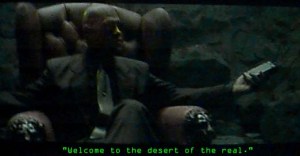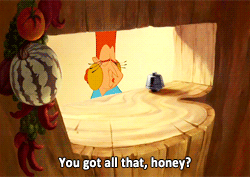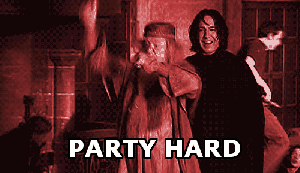Oh Baudrillard, Sweet Nihilist Baudrillard

Welcome to “The desert of the real itself” (1). Image hosted on the website English Scholar.
Ah, week 6 reading notes, how is it already this far into the semester? So these reading notes are going to be a little different in the sense that each of my classmates and I are doing different texts that will lead up to our Canonical Text Presentations. I am in charge of Jean Baudrillard’s Simulacra and Simulation and The Illusion of the End, but for this particular post, I am going to be dealing with Simulacra and Simulation. Where is our leading man?

Jean Baudrillard looking particularly ready to share with us all he knows. Image hosted on Student Pulse: The International Student Journal.
What do you think of when you see the word simulation? For me, I always return to virtual reality and the promise that lies at the heart of advancements in video games. But, simulation is more than what designers can create with software and hardware; it is something that individual people can do, or people can do collectively. Ah, that was vague, but it helps me get closer to how I am trying to define simulation, and, in turn, simulacra. So let us back up a moment and see how Baudrillard distinguishes between the infinitives “to dissimulate” and “to simulate“:
“To dissimulate is to pretend not to have what one has” (3)

Dissimulation reminds me of Sakura early in the anime Naruto as she would repress emotions that were then revealed only to the viewers through the appearance of an inner Sakura. Image hosted on Photobucket.
“To simulate is to feign to have what one doesn’t have” (3)

King of Simulation. Image hosted on the blog Casa de Queenie.
Dissimulation is not the only concept that simulation is contrasted with, as Baudrillard also sets up the difference between simulation and representation: “Representation stems from the principle of the equivalence of the sign and of the real (even if this equivalence is utopian, it is a fundamental axiom). Simulation, on the other hand, stems from the utopia of the principle of equivalence, from the radical negation of the sign as value, from the sign as the reversion and death sentence of every reference. Whereas the representation attempts to absorb simulation by interpreting it as a false representation, simulation envelops the whole edifice of representation itself as a simulacrum“ (6).
Before we go any further, let us stop and define the word simulacrum. According to the Oxford English Dictionary (OED), simulacrum is “A material image, made as a representation of some deity, person, or thing.” We see these all the time in our society and in societies that have long since past, even though we may not notice. Okay, now forward, comrades, to more definitions before we start to hash out this fun book.
To develop the conversation about representation versus simulation further, Baudrillard lists the “successive phases of the image” (the example he develops is that of religion and simulacrum of the divinity) (6):
-“it is the reflection of a profound reality” –> “good appearance — representation is of the sacramental order”
-“it masks and denatures a profound reality” –> “evil appearance –it is of the order of maleficence”
-“it masks the absence of a profound reality” –> “plays at being an appearance — it is of the order of sorcery”
-“it has no relation to any reality whatsoever: it is its own pure simulacrum” –> “it is no longer of the order of appearances, but of simulation” (6)
In his section on “Simulacra and Science Fiction,” Baudrillard extends this further by discussing “three orders of simulacra“:
-“simulacra that are natural, naturalist, founded on the image, on imitation and counterfeit, that are harmonious, optimistic, and that aim for the restitution or the ideal institution of nature made in God’s image” – “imaginary of the utopia“
-“simulacra that are productive, productivist, founded on energy, force, its materialization by the machine and in the whole system of production — a Promethean aim of a continuous globalization and expansion, of an indefinite liberation of energy (desire belongs to the utopias related to this order of simulacra);” – “science fiction”
-“simulacra of simulation, founded on information, the model, the cybernetic game — total operationality, hyperreality, aim of total control” (121)
Before we go any further, we need one more definition before we start to sort this all out: hyperreality, which is “exaggerated in comparison to reality” (Oxford Dictionaries).

Image hosted on a Buzzfeed article.
But, what does any of this mean?
If you feel a little steam coming out of your ears, rest assured that you are not alone. While I love his ideas and find them to be absolutely fascinating in terms of video games, he makes me feel a little cross-eyed. However, if you are familiar with Disneyland or Disney World (a theme park that Baudrillard himself talks about in this book), then you have already come into contact with the concepts seen above.

Hyperreality, thy name is Magic Kingdom. Image hosted on the website Goista.
When examining Disneyland, he sees the theme park as a “simulation of the third order” – “simulacra of simulation, founded on information, the model, the cybernetic game — total operationality, hyperreality, aim of total control” (12; 121). Just think about Disneyland and Disney World for a moment. It is not just a theme park where people can visit, nor it is just a animation studio that produces entertaining films. Disney is a brand, and Disneyland becomes a space in which visitors can come and be immersed in a park that is and is not founded on the real society from which they believe they are stepping away. It is exalted as a place where dreams can come true, but it is also a place where real money is spent (a lot of it, usually). Consumerism, you have found your place in the midst of fantasy. Baudrillard goes on to explain how Disneyland, in light of an ideological analysis, is a “digest of the American way of life, panegyric of American values, idealized transposition of a contradictory reality. Certainly. But this masks something else and this ‘ideological’ blanket functions as a cover for a simulation of the third order: Disneyland exists in order to hide that it is the ‘real’ country, all of ‘real’ America that is Disneyland” (12). For Baudrillard, Disneyland is presented as a fantasy in order to make the rest of society seem real.
Now pause. Let that sink in. If you’re like me, it’s okay to take a moment away from this screen to process the implications of that statement.
Okay, are we back? Moving deeper into that thought!
For Baudrillard, the idea that society is real is false and that “It is no longer a question of a false representation of reality (ideology) but of concealing the fact that the real is no longer real, and thus saving the reality principle. The imaginary of Disneyland is neither true nor false, it is a deterrence machine set up in order to rejuvenate the fiction of the real in the opposite camp” (12-13). He goes on to explain that it is Los Angeles, by having amusement parks like Disneyland within its boundaries, that is a “city of incredible proportions but without space, without dimension” (13). Disneyland, by having boundaries (it is clear where the amusement park physically ends), can (in a very strange way) fill in the gaps that remain in the “real” city of Los Angeles. It is more real than what should be considered real, even though we are aware that everything within that city is not real. It is a performance in which we all engage, willingly so whatever the reason.
This argument about there being no real reminds me of Plato and his idea about copies of things. For a very basic rundown (it’s been more than a few years since I last had to deal directly with his work), Plato believed that the items around us, the items we build, such as a chair, are merely copies of the ideal. Let’s just roll with the chair example since that is the one I was taught. The chair I am sitting on is, according to Plato, a copy of a chair that is ideal but also unobtainable. I will never sit in that special, ideal chair. If I were to draw a chair (at least once that was recognizable as a chair), then my drawing would be a copy of a copy of that ideal chair. I don’t know where Plato or Baudrillard got their ideas that there is no real (I am deeply grounded in the practical, so theoretical works make my brain rather twisty). For me, if I can touch and sit on a chair, then it’s real to me; not just a copy that was delivered from the Twilight Zone. In much the same way, thinking that Los Angeles is not real is also harder to grasp, so I think of it in two ways. Yes, there is the real, physical space of a city called Los Angeles. If I ever travel there, I would be able to walk along its streets, shop in its stores, greet its inhabitants, and visit the hyperreality of Disneyland. However, I can also see where Baudrillard is coming from. The concept of Los Angeles is less concrete, less real. As a city that has sprawled out and consumed neighboring spaces, Los Angeles is a behemoth of a metropolitan area, and not all of it can be considered Los Angeles. Society is run on a set of ideas that are not truths; they are social and cultural beliefs that we have collectively agreed on and continue to keep in existence by voluntarily agreeing on them.
Ah, but I digress. For anyone who is reading this post, I will be expanding upon my notes for this book in another entry (one that will also deal with The Illusion of the End) in order to explore how the ideas expressed by Baudrillard fit into New Media and the digital era. My goal is to start fleshing (always makes me think of zombies) out how video games can be understood within the concepts of simulation and simulacra (not if video games can be understood with these two lovely concepts, but how they can be understood).
To help give me a concrete vision of how simulacra and simulation are used and played upon today, I turned to YouTube.
And, for your viewing pleasure, I give you a taste of Baudrillard in his own right.
Whew, we made it to the end. Do we care what the neighbors think as my pups and I blast “Defying Gravity” to end this blog entry?

It’s the little things in life we need to celebrate. Like making it to the end of another set of reading notes. Image hosted on the blog Heroine of Time.

Ah yes, feel the bliss of having seen this image. Image hosted on Harry Potter Buzzfeed article.
Citations
Time to Defy Gravity
Update:
For this week, I commented on Ramona’s post as she was discussing Tornatzky and Klein’s concept of Innovation, and Bolter and Grusin’s Immediacy, Hypermedia, and Remediation. Ramona’s notes were very clear in presenting how each concept was defined by the respective author(s) and then using images and popular culture references to give a fuller understanding of the concept. The concepts of immediacy, hypermedia, and remediation are very useful in video game studies, as they are the goals and processes through which video games work. Ramona’s post made me think about how each of these terms works (and sometimes fails) in the video games I play and study. One interesting thing is how video games work towards immediacy as they want their players to be immersed in the worlds they are providing, dropping into lush environments, being surrounded by gripping music, and having a character to follow around in the gamespace. However, because there is a barrier between the gamer and the gamespace (computer screen, television screen, or gaming device screen), the games fail in having complete immediacy. Then enters hypermediation as video games integrate text in the forms of dialogue (captions at the bottom) and written narration (not every game draws on this, but many do). The use of written narration was very popular before video games could integrate voice actors into their games, with some of my favorites (Final Fantasy 8) drawing upon such tactics in their opening scenes. Remediation also makes an appearance as video games, especially role playing games, using cinematics for opening and closing scenes but also for moments known as CGI (clips in-game where control is taken away from the gamer, placing them in the role of viewer for a short time) to help progress the story. Video games do resemble animated movies, but the bulk of the experience is in playing them; however, with CGI moments, video games take on characteristics of movies, attempting to absorb that medium as part of the experience.
While reading Ramona’s notes, I thought a lot about the game, especially the opening, of Final Fantasy 8.
Next, I read Cynthia‘s post on McLuhan’s The Media is the Massage and her notes on Tornatzky and Klein’s Innovation. Cynthia’s notes on the concept of innovation were really interesting because she tied them to apps that people use all the time on their cell phones; she even linked out to a TED Talk on NPR that discusses how free apps are not quite as free as they are believed to be or advertised. I thought this was a nice way to present the material because it provided a foundation and context through which her readers could connect the concept to their own lives and technology uses. The main part of Cynthia’s post, though, was concerning her Canonical text, which was the McLuhan piece. I liked that she linked out to essays that embodied some of McLuhan’s points (shall we say, fears?) regarding advancements in technologies and their cultural and societal impacts, which also gave her readers context and a way to apply McLuhan’s discourse to their own lives. The context she provides was especially helpful since I am getting a sense of McLuhan’s work through her post alone (unless I get off my lazy scholarly butt and order the book to read…over winter break?) and would not have full access to his ideas and how they would apply beyond his work.

I am still trying to really grasp the idea of “real” not being actually “real”; however, the concept comes up again in the modern book I am reading: “Mediated” by Thomas de Zengotita. De Zengotita’s thesis mirrors Baudrillard’s which 1) reveals the foundational concepts on which de Zengotita’s ideas were built and, 2) forwards the thought that our collective inability to distinguish what is real predates digital media. I really like that you linked Baudrillard’s ideas to Plato–for some reason that clarified the concept for me (at least in terms of helping me to understand what Baudrillard was saying–not really, thoroughly grasping the whole real-so-not-real thing, which is harder.)
https://dawnofthecyborg.wordpress.com/
Pingback: Until the End of the Illusion, We Will Baudrillard Forward_Reading Notes October 6th | Dawn of the Cyborg
Ah, Summer. Your reading notes are an adventure. Baudrillard, as you know, is not on my list of cool people. I think simulacra and simulation is often overused (not to take anything away from Baudrillard, which I could never do). Having read Ramona’s notes on remediation, I think I am starting to conflate all the terms. Whenever I think of simulacra, I think of hip hop and pop artists. The definition you provided: “A material image, made as a representation of some deity, person, or thing.” Could an artist be so far out there that they become a simulacra of him or her self? Anyway, I am wondering if Hip Hop would be simulacrum. What I mean by that is that is similar to the way the law upholds “justice,” Hip Hop, in its present form, creates the “authentic” African American experience in the US. I’m not sure if I’m on the right track with that but I find this all very intriguing.
Reblogged this on oogenhand.